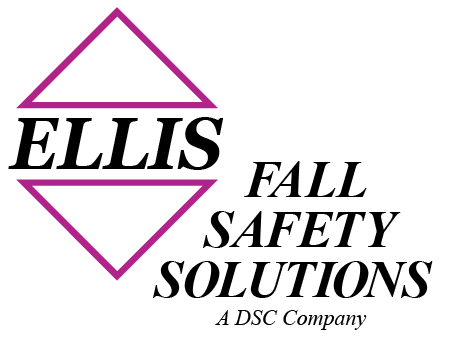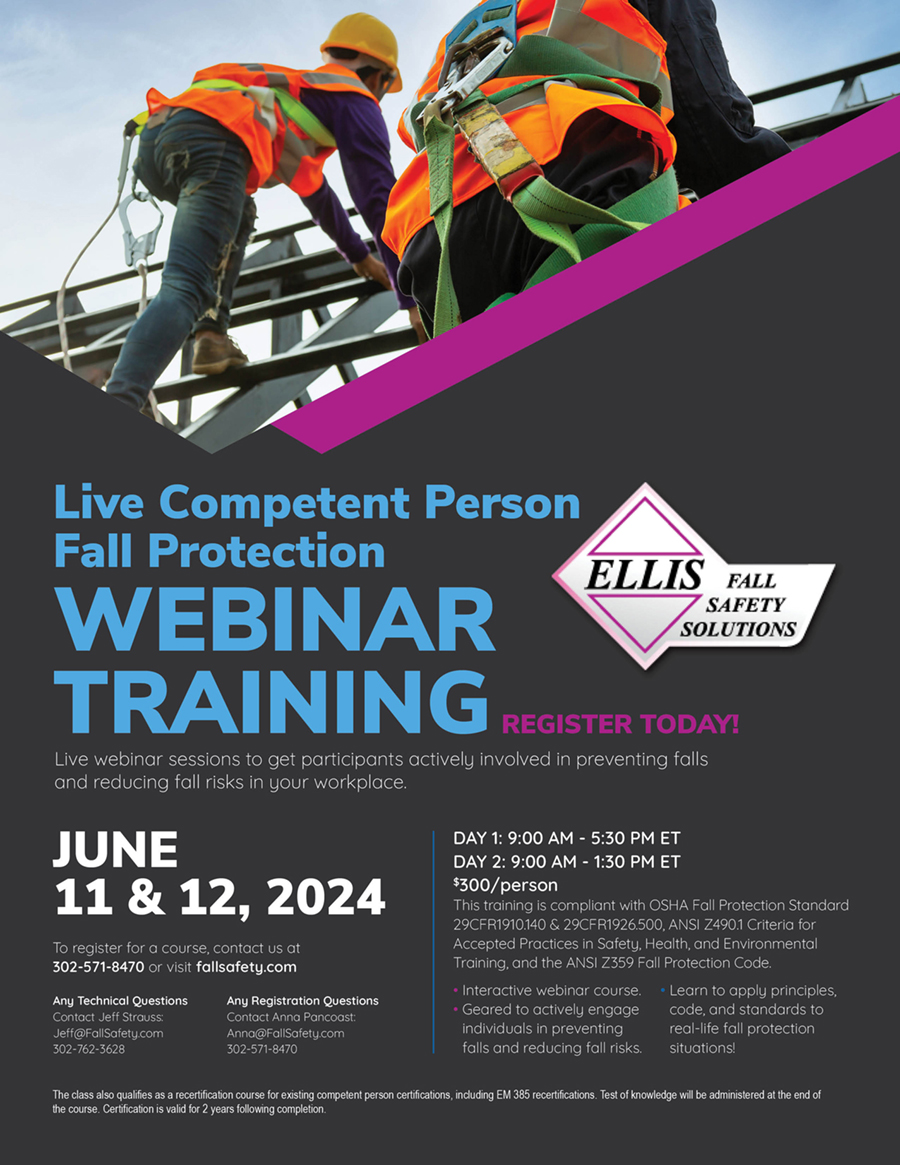Tip of the Week No. 20 A – 04/19/04 Scaffolding
We must also bear in mind that even if the scaffold component does not fail, the forces generated by the fall arrest system could topple the scaffold. The industry has demonstrated often that in most cases when a 220 lb. weight falls off the scaffold that the scaffold itself topples.
See “Introduction to Fall Protection, 3rd Edition” page 391.
How about ordering a copy of for yourself? Order online now.
Tip of the Week No. 76 A – 06/27/05 – Hoists
With the exception of elevators, very few hoists or winches are “man-rated”, certifying that they are of a sufficiently rugged design to be used to lower and raise workers reliably.
Even those that are man-rated by a nationally recognized laboratory require a backup lifeline device when used for accessing workers up or down.
Testing for access hoists should meet national requirements for such scaffolding equipment.
See “Introduction to Fall Protection, 3rd Edition” page 267.
How about ordering a copy of for yourself? Order online now.
Tip of the Week No. 94 A – 12/05/05 – Scaffolds
There are two basic types of scaffolds, swing/suspended scaffolds (also called stages) and supported scaffolds.
Swing/suspended scaffolds are rigged to descend from an upper area, such as a roof. There are four-point, two-point, and one-point suspension scaffolds.
Lifelines are required for use on these at any height.
Supported scaffolds are built up from a starting point under the ground. Three basic types of supported scaffolds are: (1)tube and coupler scaffolds; (2) systems scaffolds; and (3)frame scaffolds.
See “Introduction to Fall Protection, 3rd Edition” page 94.
How about ordering a copy for yourself? Order online now.
Safety News Item – 05/05/06 – Scaffolding/Platforms
Formwork is moving from the traditional lumber systems built at the site to modern modular, high-strength alumimum systems including some large suspended slabs with large-area, crane handled units.
These systems are reusable, much faster and easier to install and dismantle and can increase safety as the large, modular systems have handrails and other safety features are built in.
Tip of the Week No. 80 – 08/15/05 – Scaffolds
For long-row scaffolds, such as those used in masonry or stucco work, a fall hazard may exist after erection because of openings for material access and openings close to the building.
In these cases, where guardrails and/or planks and picks do not provide suitable protection from falls, a horizontal lifeline can be designed to run either partway along or the full length of the scaffold.
See “Introduction to Fall Protection, 3rd Edition” page 97.
How about ordering a copy of for yourself? Order online now.
Tip of the Week No. 57- 02/14/05 – Scaffolds
The Misconception: Ground built scaffolds have no provision for tie-off during erection.
The Realty: A well-designed tube and clamp or frame scaffold erection will already have either the anchorage point at waist height minimally or, alternatively, railings from a push-up masonry type outrigger.
See “Introduction to Fall Protection, 3rd Edition” page 71.
How about ordering a copy of for yourself? Order online now.
Tip of the Week No. 332 – 10/01/2012 – Scaffold Erection
Whether or not any scaffold structure at all extends above the erector’s feet depends upon the type of scaffold. With frame scaffold, there will not be any scaffold structure above the platforms upon which the erector is standing. The only scaffold structure would be the frame underneath the platforms upon which the erector is standing.
If the erector were to tie off to the frame under his feet, the erector would not be able to move horizontally (even with a Y lanyard) because the 6-foot length of the lanyard is used up going from the erector’s D ring to the frame below. Once the erector sets the first frame, there will be scaffold structure above his head. However, when that frame is first set, it will not meet the criteria for an adequate anchorage point, as it is only resting on top of the extention of the coupling pin and could easily bend over or dislodge if impacted by horizontal forces.
See “Introduction to Fall Protection, 4th Edition” pages 144-145.
Introduction to Fall Protection, 4th Edition now available for purchase. To order your copy call 1-800-372-7775 or order online at Introductionto Fall Protection, 4th Edition Orders.
Please select a category from the list below
- Aerial Lifts/Platforms
- Anchorage Points
- Calculations
- Construction Contracts
- Consulting
- Cranes
- Descent Devices
- Ellis Articles
- Ellis Presentations
- Equipment Maintenance
- Ergonomics/Human Factors
- Fall/Safety Statistics
- FP systems, programs
- Guardrails
- Harnesses, FP Equipment, HLL, SRL
- Hazards
- Holes/Pits
- Ladders
- Lanyards/Twin Tail Lanyards
- Misc.
- Nets
- New
- NIOSH
- OSHA News/Citations
- PFAS
- Rescue
- Roofs
- Ropes
- Safety Cases
- Safety Organizations
- Scaffolds
- Skylights
- Stairs
- Standard/Regulations
- Steel Erection
- Tanks
- Towers
- Training
- Tree Stands
- Trucks
- Tying Off
- Veterans of Safety
- Window Cleaners
- Workers Comp

